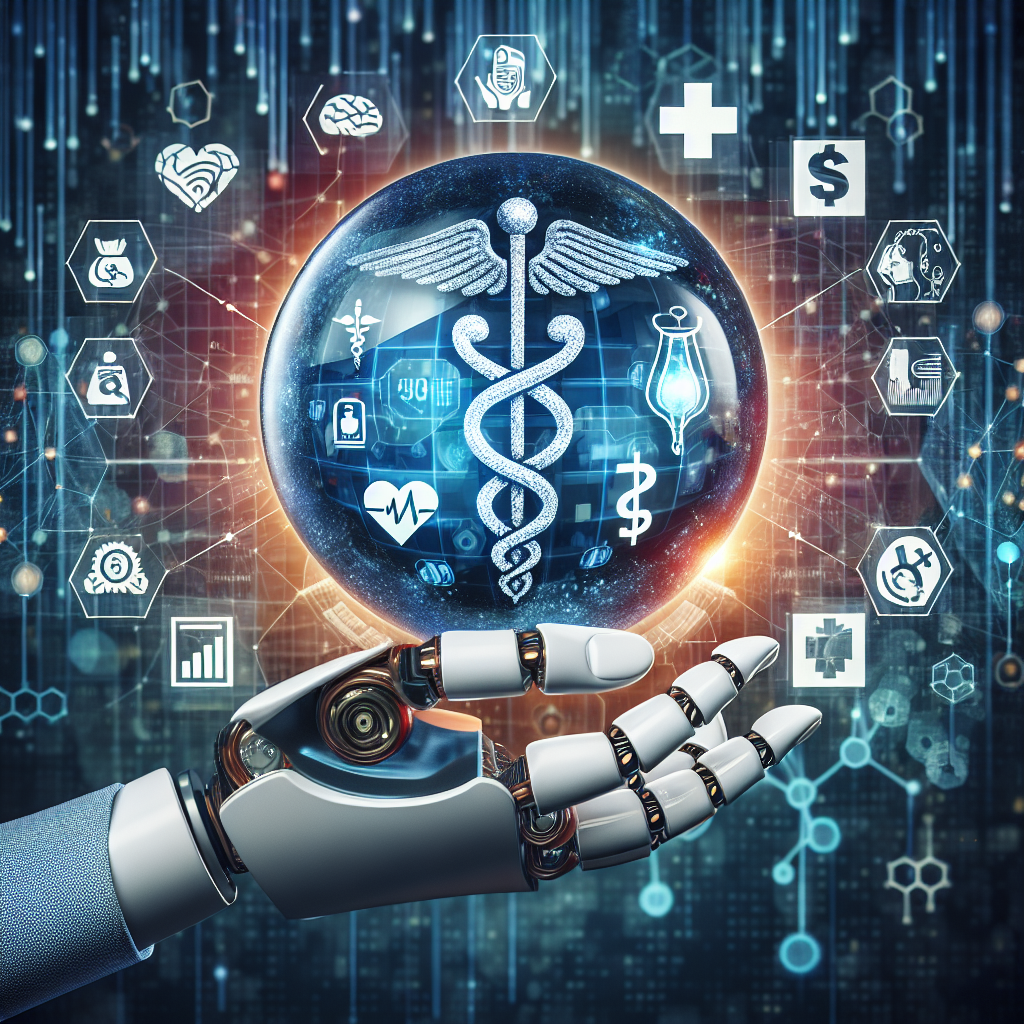Artificial Intelligence (AI) has been making waves in the healthcare industry, transforming the way medical professionals operate and improving patient outcomes. One area where AI is particularly impactful is revenue forecasting, helping healthcare organizations better predict and manage their finances. In this article, we will explore how AI is being used in healthcare revenue forecasting and what the future holds for this exciting technology.
AI in Healthcare Revenue Forecasting
Healthcare organizations face numerous challenges when it comes to revenue forecasting. With the complex nature of healthcare billing and reimbursement, accurately predicting revenue streams can be a difficult and time-consuming process. Enter AI, a game-changer in the world of revenue forecasting.
AI leverages advanced algorithms and machine learning to analyze vast amounts of data and generate accurate predictions. In healthcare, AI can be used to forecast revenue based on factors such as patient volume, reimbursement rates, and payer mix. By analyzing historical data and trends, AI can provide valuable insights that help healthcare organizations make informed decisions about their financial future.
One of the key benefits of using AI in revenue forecasting is its ability to identify patterns and trends that may be missed by human analysts. AI can process large datasets quickly and efficiently, allowing organizations to make more accurate predictions in less time. This not only saves healthcare organizations money but also enables them to allocate resources more effectively.
AI can also help healthcare organizations improve their revenue cycle management by identifying areas where revenue may be at risk. By analyzing billing and coding data, AI can flag potential errors or discrepancies that could lead to denied claims or underpayments. This proactive approach to revenue cycle management can help healthcare organizations maximize their revenue and reduce the risk of financial losses.
Furthermore, AI can provide real-time insights into revenue performance, allowing organizations to make adjustments as needed to optimize their financial outcomes. By leveraging AI-powered analytics tools, healthcare organizations can monitor key performance indicators and track revenue trends in real-time, enabling them to make data-driven decisions that drive financial success.
The Future of AI in Healthcare Revenue Forecasting
As AI continues to advance, the future of healthcare revenue forecasting looks promising. With the increasing availability of data and improvements in AI technology, healthcare organizations can expect even greater accuracy and efficiency in their revenue forecasting efforts.
One area where AI is expected to make a significant impact is in predictive analytics. By using AI to analyze historical data and predict future trends, healthcare organizations can forecast revenue with greater precision and confidence. This can help organizations better plan for the future and make strategic decisions that drive financial growth.
Another area of growth for AI in healthcare revenue forecasting is in automation. By automating repetitive tasks and processes, AI can free up healthcare professionals to focus on more strategic initiatives. This can lead to increased productivity and efficiency, as well as cost savings for healthcare organizations.
AI-powered tools are also expected to become more user-friendly and accessible to healthcare organizations of all sizes. As AI technology matures, healthcare organizations can expect more intuitive and customizable solutions that meet their specific needs and requirements. This democratization of AI in healthcare revenue forecasting will enable more organizations to harness the power of AI and drive financial success.
FAQs
Q: How can AI help healthcare organizations improve revenue forecasting?
A: AI can help healthcare organizations improve revenue forecasting by analyzing large datasets quickly and efficiently, identifying patterns and trends that may be missed by human analysts, and providing real-time insights into revenue performance. By leveraging AI-powered tools, healthcare organizations can make more accurate predictions and optimize their financial outcomes.
Q: What are some benefits of using AI in healthcare revenue forecasting?
A: Some benefits of using AI in healthcare revenue forecasting include improved accuracy and efficiency, proactive revenue cycle management, real-time insights into revenue performance, and cost savings. AI can help healthcare organizations make informed decisions about their financial future, maximize revenue, and reduce the risk of financial losses.
Q: What does the future hold for AI in healthcare revenue forecasting?
A: The future of AI in healthcare revenue forecasting looks promising, with advancements in predictive analytics, automation, and user-friendly tools expected to drive growth. As AI technology continues to evolve, healthcare organizations can expect greater accuracy and efficiency in their revenue forecasting efforts, as well as increased productivity and cost savings.
In conclusion, AI is revolutionizing the way healthcare organizations approach revenue forecasting, providing valuable insights and driving financial success. With the continued advancements in AI technology, healthcare organizations can expect even greater accuracy, efficiency, and strategic decision-making in their revenue forecasting efforts. As AI becomes more accessible and user-friendly, healthcare organizations of all sizes can harness the power of AI to optimize their financial outcomes and drive growth.

